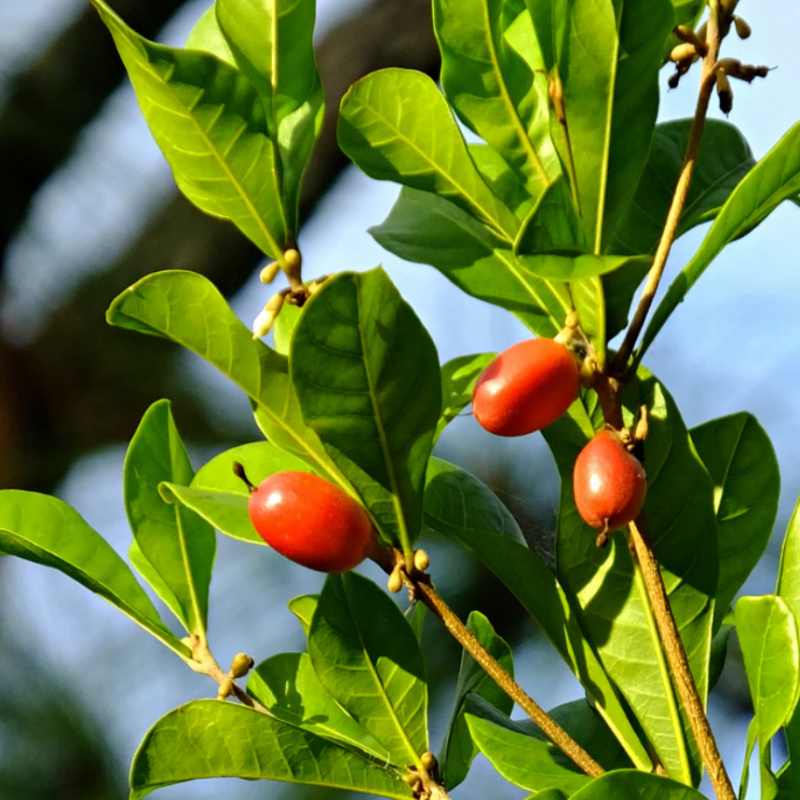
Miracle Fruit
Synsepalum dulcificum
Basic Information
🌿 Family: Sapotaceae🗺️ Zone: 10-11
Other Names:
- Miracle Berry
- Miraculous Berry
- Sweet Berry
🌡️ Ideal Temperature : 70°F – 85°F
🔥 Heat Tolerance: Up to 100°F
❄️ Cold Tolerance: Down to 60°F
🌱 Type: Perennial
Layers
- Shrub
Functions
- Edible
- Medicinal
- Pollinator
- Wildlife Attractor
- Border Plant
Pests
No pests associated with this plant.
Description
Synsepalum dulcificum, commonly known as Miracle Fruit, is an evergreen shrub native to West Africa. It typically grows up to 1.8–4.5 meters (6–15 feet) in height and has dense foliage with dark green, oval leaves measuring 5–10 centimeters (2–4 inches) in length. The plant produces small, white flowers throughout the year, which develop into red, oval berries approximately 2 centimeters (0.8 inches) long. These berries contain a glycoprotein called miraculin that temporarily alters taste perception, making sour foods taste sweet.
🌞💧 Sun and Water Requirements:
Miracle Fruit thrives in partial shade and requires high humidity. It prefers acidic soils with a pH between 4.5 and 5.8. The plant is drought-tolerant but benefits from regular watering to maintain soil moisture.
✂️🫘 Methods to Propagate:
Propagation is typically done through seeds, which require 14 to 21 days to germinate. Seeds should be planted in acidic, well-draining soil and kept moist. Alternatively, cuttings can be used, though they may be more challenging to root.
🧑🌾👩🌾 When to Harvest:
The plant begins to bear fruit after 3 to 4 years of growth, producing two crops per year, usually after the end of the rainy season. Berries should be harvested when they turn bright red and are fully ripe.
Purpose
- **Edible**: The berries are consumed to alter taste perception, making sour foods taste sweet.
- **Medicinal**: Potential use in improving the palatability of certain medications.
- **Pollinator**: The small white flowers attract pollinators, aiding in garden biodiversity.
- **Wildlife Attractor**: The berries can attract birds and other wildlife.
- **Border Plant**: Can be used as an ornamental shrub in garden borders.